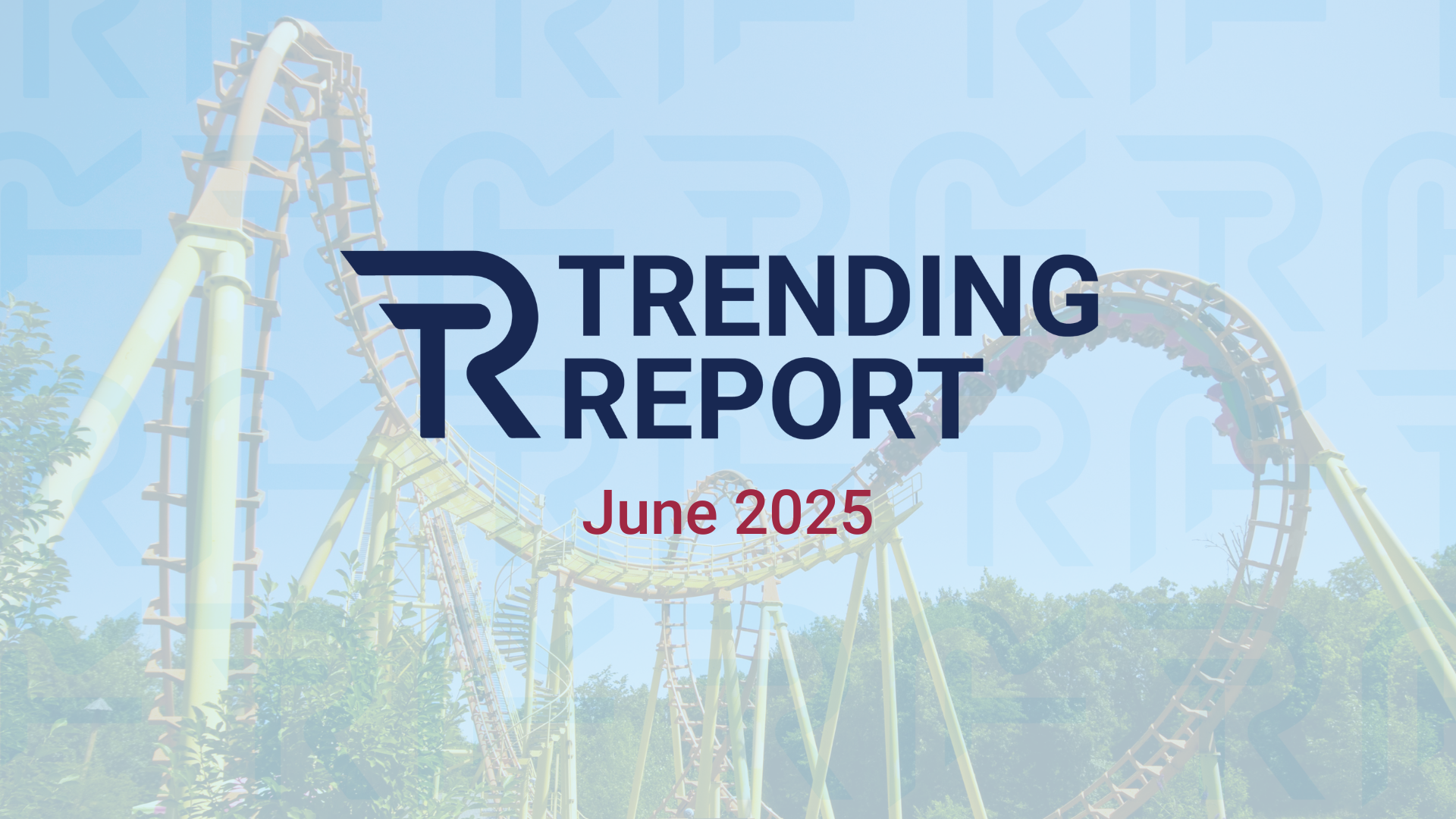Riding the Emotional Rollercoaster of the Market

In this June 2025 Trending Report, Kevin Roskam of USA Financial breaks down the latest stock market trends and explains how understanding the cycle of investor emotions can help investors and financial advisors make better long-term decisions. With ongoing market volatility and economic uncertainty, Kevin emphasizes the importance of a disciplined, unemotional approach to investing. Learn how formulaic investing strategies and risk management tools are used in attempts to avoid emotional mistakes, reduce exposure during downturns, and identify sustainable market uptrends. If you're looking to stay informed on current market conditions, protect your portfolio, and stay aligned with your long-term investment strategy, this market update is a must-watch.
Kevin Roskam of USA Financial opens the June 2025 Trending Report with a reflection on how quickly time passes, setting the stage for a deeper discussion on why USA Financial places such a strong emphasis on trending, unemotional investing, and disciplined long-term strategies. He revisits a familiar concept for many investors and advisors: the cycle of investor emotions. This emotional rollercoaster, which has repeated itself across various market cycles—from the tech bubble of the early 2000s to the financial crisis of 2008, and more recently in 2020 and 2022—helps explain why even experienced investors often make poor decisions during times of volatility. Kevin describes how emotions like anxiety, denial, fear, and panic typically follow market downturns, eventually leading to capitulation and despondency, which is often when investors want to pull their money out of the market. As markets recover, emotions shift from hope to relief, then to optimism, excitement, and finally euphoria—just before the cycle starts over again.
He emphasizes that while we can’t fully control investor emotions, recognizing where we are in this emotional cycle can help mitigate their impact. Staying grounded during emotional highs and lows is crucial for sticking to a long-term financial plan. Many investors fall into the trap of evaluating long-term strategies based on short-term market movements—judging a plan’s effectiveness over two months rather than years—which can lead to poor decision-making. Kevin reinforces a key principle: short-term emotions kill long-term plans. He encourages viewers to remember the purpose of a well-crafted strategy and to avoid making emotional shifts in response to recent volatility.
Kevin transitions into a practical explanation of how trending tools are designed to support this type of unemotional investing. He introduces one of the firm’s risk management indicators, a numerical model that tracks market momentum and signals when to be invested and when to exit. The tool works by establishing numeric thresholds—such as needing to fall below a certain number to trigger an exit from the market, and requiring a different, higher number to justify re-entry. This approach is designed to avoid false positives and ensure that any action taken is based on sustained and verifiable market movement. By doing so, the model minimizes exposure to short-term volatility and avoids chasing market noise.
To explain the philosophy behind this strategy, Kevin uses a relatable analogy from his own life in West Michigan. He describes how, in winter, he enjoys ice fishing—but won’t venture onto the ice until he sees others safely out there first. He acknowledges that this means missing some of the best early-season fishing, but it's a trade-off he gladly accepts in the name of safety. This same logic applies to risk management in investing: sometimes missing the initial gains in a market upswing is the price of avoiding potentially catastrophic losses during a downturn. Caution may lead to missing a few opportunities, but it's a necessary compromise to protect long-term outcomes.
Kevin ties this back to the emotional cycle by pointing out where trending tools typically trigger action. On the downside, they often exit the market somewhere between denial and desperation, before full panic sets in. On the upside, they usually re-enter the market during the optimism phase—after a sustainable trend has emerged but before euphoria takes hold. This helps investors avoid reacting emotionally and instead follow a rules-based strategy that increases the likelihood of success.
He also highlights the variability in how trending strategies are executed. Some money managers use daily signals, others weekly or monthly. These layers allow for diversification in timing and exposure, helping to spread out risk across different points of entry and exit. This multi-layered approach is particularly useful in periods like the current one, where headline-driven uncertainty still lingers in the economy despite recent gains in the stock market.
Kevin then reviews recent market activity, particularly the performance of the S&P 500 over the last month and year. He notes that despite a generally upward trend, there is still significant volatility. Investors may be tempted to believe the recovery is full and permanent, but Kevin urges caution. Volatility remains the cost of growth, and just because the market has gone up doesn’t mean it will stay up. The role of trend-based investing is to help navigate this volatility by identifying patterns that suggest whether a move is sustainable or just noise.
He acknowledges that current conditions are complex. Economic signals can be mixed or even contradictory—just as they were in 2020, when the market rebounded strongly even as economic fundamentals looked grim. Similarly, today's headlines about tariffs, political uncertainty, and global instability may not always align with what the stock market is doing. The key takeaway is that regardless of what’s going on in the world, an investor’s long-term strategy should already account for these types of events.
In closing, Kevin reiterates that a well-designed, formula-based investment strategy—one that incorporates unemotional trending tools and a strong risk management discipline—offers the best chance for long-term success. Even though it may feel uncomfortable to sit out parts of a rally or to exit a market before a crash fully materializes, these moves are grounded in logic, not emotion. Over the last five years, markets have experienced several sharp drops, and each time the value of a consistent, unemotional, disciplined approach has been reinforced. Investors who stay the course with a clear plan and resist the urge to react emotionally are far more likely to reach their financial goals.
Kevin concludes by encouraging investors to trust the plan they put in place when emotions weren’t clouding their judgment. If the plan made sense then—and it properly reflected their risk tolerance and long-term objectives—it should still make sense now. June 2025 may bring its own set of challenges, but with the right mindset and strategy, long-term success remains within reach.
--
The Trending Report is a monthly commentary series that explores topical trends taking place within the current market and economy. It aims to provide clarity and encourage Advisors and Investors as they navigate and make sense of current market conditions. The ongoing battle between short term emotions and the commitment to long term investing is real. This series seeks to help Advisors and Investors focus their energy on long term success. Hosted and published by the investment professionals at USA Financial, each episode offers valuable commentary and analysis into various economic factors and market movements. By tuning in, our host breaks down complex topics into easy-to-understand information.
The Trending Report is also published via a podcast for easier, on-the-go listening. Subscribe today via Apple Podcasts, Google Podcasts, or your preferred podcast listening servic
Author Info

Kevin Roskam is a Senior Advisory Business Consultant with USA Financial, joining the firm in 2005. He consults with advisors to tailor our...
Related Posts

What’s Trending: Diversification Beyond Assets for Long-Term Success
As 2025 comes to a close, the S&P 500 is up nearly 18% for the year—but what does that mean for your portfolio? In this December Trending Report, Kevin Roskam breaks down the year’s market performance, the role of trending strategies, and why diversification by time and philosophy matters more than ever. Learn how unemotional, disciplined investing helps you navigate volatility and stay focused on long-term success.

Direct Indexing Explained: How Advisors and Investors Benefit
What if you could track an index, customize your portfolio, and reduce taxes - all at once? That’s the goal of direct indexing, a strategy gaining traction among advisors and investors alike.

Independent Broker-Dealer Solutions that Drive Advisor Growth
In today's competitive environment, you don't have time for anything less than complete solutions. Your clients expect excellence, and you deserve support partners who share that commitment.

What’s Trending: Diversification Beyond Assets for Long-Term Success
As 2025 comes to a close, the S&P 500 is up nearly 18% for the year—but what does that mean for your portfolio? In this December Trending Report, Kevin Roskam breaks down the year’s market performance, the role of trending strategies, and why diversification by time and philosophy matters more than ever. Learn how unemotional, disciplined investing helps you navigate volatility and stay focused on long-term success.

Direct Indexing Explained: How Advisors and Investors Benefit
What if you could track an index, customize your portfolio, and reduce taxes - all at once? That’s the goal of direct indexing, a strategy gaining traction among advisors and investors alike.

Independent Broker-Dealer Solutions that Drive Advisor Growth
In today's competitive environment, you don't have time for anything less than complete solutions. Your clients expect excellence, and you deserve support partners who share that commitment.

